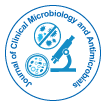

Commentary - (2024)Volume 8, Issue 3
Acinetobacter baumannii is a gram-negative, aerobic bacterium that has become a major pathogen in nosocomial infections, particularly in Intensive Care Units (ICUs) and among immunocompromised patients. It is responsible for a wide range of infections, including pneumonia, bloodstream infections, urinary tract infections and wound infections. The clinical significance of Acinetobacter has been amplified by its ability to develop resistance to multiple classes of antibiotics, leading to difficulties in treatment. This study discusses about the clinical approaches to the diagnosis and treatment of Acinetobacter infections, focusing on diagnostic methods, antimicrobial therapies and emerging strategies to combat these infections.
Epidemiology of acinetobacter infections
Acinetobacter infections are increasingly common in hospitalized patients, particularly those with underlying conditions such as diabetes, cancer or chronic respiratory diseases. Acinetobacter baumannii is well-known for its ability to survive on inanimate surfaces for prolonged periods, making hospital environments an ideal breeding ground for the pathogen. Transmission often occurs via direct contact or through contaminated surfaces, medical devices, or healthcare workers’ hands. The pathogenicity of Acinetobacter baumannii is attributed to several factors, including its ability to form biofilms, evade host immune defenses, and its extensive capacity for acquiring resistance to antibiotics. The bacterium's ability to form biofilms on medical devices and tissues complicates treatment and eradication, leading to chronic and recurrent infections.
Clinical diagnosis of acinetobacter infections
The diagnosis of Acinetobacter infections involves clinical suspicion, microbiological culture and laboratory testing. In cases of suspected pneumonia or sepsis, blood cultures, sputum samples, or wound swabs are collected for analysis. The following diagnostic approaches are commonly used.
Microbiological culture: The definitive standard for diagnosing Acinetobacter infections is the culture of the microorganism from clinical samples. Acinetobacter is typically cultured on standard media such as blood agar or MacConkey agar. It appears as non-fermentative, oxidase-negative colonies that can be identified further using biochemical tests or molecular methods.
Molecular methods: Polymerase Chain Reaction (PCR) is increasingly used to detect Acinetobacter baumannii in clinical samples due to its sensitivity and specificity. PCR assays can identify specific genes associated with resistance mechanisms and facilitate rapid detection of the pathogen, enabling earlier and more targeted treatment.
Imaging: In cases of pneumonia or deep infections, imaging techniques like chest X-rays or CT scans can be helpful in assessing the extent of infection and guiding treatment strategies.
Antimicrobial treatment of acinetobacter infections
The treatment of Acinetobacter infections is complicated by its resistance to multiple classes of antibiotics. The ability of Acinetobacter to acquire resistance through horizontal gene transfer and mutations in its genome means that infections often involve Multidrug-Resistant (MDR) or Extensively Drug- Resistant (XDR) strains. Effective treatment requires an understanding of the susceptibility patterns and careful selection of antibiotics. Carbapenems, such as meropenem, imipenem, and doripenem, are typically used as first-line agents for treating Acinetobacter infections. However, resistance to carbapenems, particularly due to the production of carbapenemases (such as KPC, OXA and NDM types), has become widespread. In cases of carbapenem-resistant Acinetobacter (CRAB), alternative therapies must be considered. Polymyxin B and colistin are among the last-resort antibiotics for treating carbapenemresistant Acinetobacter infections. Despite their effectiveness, polymyxins are associated with nephrotoxicity and neurotoxicity, limiting their use in some patients. Combination therapy involving polymyxins with other antibiotics is often employed to improve outcomes and reduce the development of resistance. Aminoglycosides like gentamicin and amikacin are commonly used in combination with other antibiotics for Acinetobacter infections. These agents are effective against many strains of Acinetobacter but are often used in combination to avoid resistance and increase bacterial killing. Sulbactam, a betalactamase inhibitor, has shown efficacy in treating Acinetobacter infections, especially when used in combination with beta-lactam antibiotics. In particular, the sulbactam and ampicillin combination can be effective for treating certain carbapenemresistant strains. Tigecycline, a glycylcycline antibiotic, has activity against Acinetobacter, particularly multidrug-resistant strains. It is typically used for complicated intra-abdominal and skin infections but is not recommended for bloodstream infections due to its poor pharmacokinetic properties in the bloodstream. Given the high levels of resistance in Acinetobacter, combination therapy is often employed. This approach can include a polymyxin in combination with carbapenems, aminoglycosides, or sulbactam, depending on the susceptibility profile of the pathogen. Combination therapy is particularly effective in reducing the risk of resistance development. Acinetobacter baumannii is a formidable pathogen, particularly in hospital settings, where it causes a wide range of infections that are often difficult to treat due to antibiotic resistance. Clinical diagnosis involves microbiological culture and molecular testing, with antimicrobial susceptibility testing being important for guiding treatment. The treatment of Acinetobacter infections requires careful selection of antibiotics, often using combination therapies to overcome resistance. With the increasing prevalence of multidrug-resistant and extensively drug-resistant strains, novel therapeutic strategies, including bacteriophage therapy, immunotherapy and novel antibiotics, are essential for managing these infections. As research continues to uncover latest treatments and resistance mechanisms, clinicians must remain vigilant and adapt to the evolving environment of Acinetobacter infections.
Citation: Guez N (2024). Clinical Approaches to the Diagnosis and Treatment of Acinetobacter Infections. J Clin Microbiol Antimicrob. 8: 201
Received: 23-Aug-2024, Manuscript No. JCMA-24-35603; Editor assigned: 26-Aug-2024, Pre QC No. JCMA-24-35603 (PQ); Reviewed: 09-Sep-2024, QC No. JCMA-24-35603; Revised: 16-Sep-2024, Manuscript No. JCMA-24-35603 (R); Published: 24-Sep-2024 , DOI: 10.35248/ JCMA. 24.8.201
Copyright: © 2024 Guez N. This is an open-access article distributed under the terms of the Creative Commons Attribution License, which permits unrestricted use, distribution, and reproduction in any medium, provided the original author and source are credited.